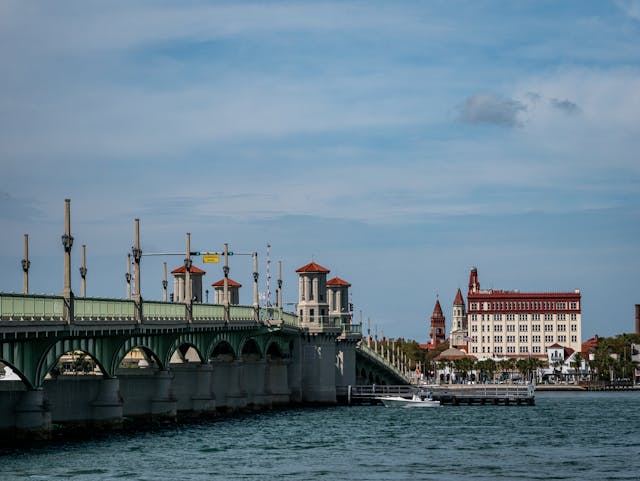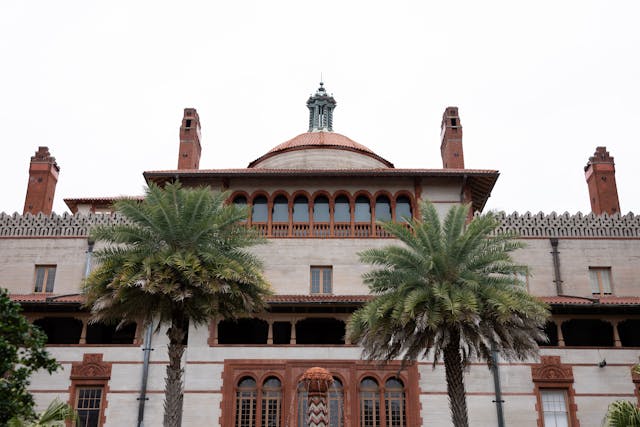I didn’t grow up knowing much about St. Augustine. It wasn’t covered in school beyond a quick mention. But walking its streets in person, I finally grasped what made this place different. Investigating the origins of St. Augustine wasn’t just about old buildings and plaques. It was about putting my hands on history and feeling how alive it still is. The city dates back to 1565—decades before Jamestown and Plymouth—and the Spanish influence still defines every corner.
St. George Street Pulled Me In Instantly
When I stepped onto St. George Street, I understood I was somewhere unusual. No chain stores. No traffic. Just footpaths, colonial-era storefronts, and small museums wedged between bakeries and ice cream shops. A guitarist played under a shady tree, and the smell of grilled seafood drifted out of a small kitchen. The pace was slow, but it didn’t feel forced. It felt like the buildings were talking—holding onto stories I hadn’t heard yet. This street alone made it clear why exploring Florida’s hidden gems always leads curious travelers here.
Standing Before Castillo de San Marcos
The Castillo de San Marcos sits right on the bay, and the view alone is worth the visit. I could see sailboats gliding in the distance as I climbed its walls. Inside, the rooms echoed. These walls withstood battles, hurricanes, and change. Made from coquina stone—tiny seashells compressed into rock—the fort wasn’t built for decoration. It was made to last. Being inside it, I imagined soldiers on night watch, cannon fire in the dark, and a city trying to protect itself. It wasn’t hard to get lost in that thought.
Romantic Places in the State Don’t Get Better Than This
As night approached, the mood shifted. Lights sparkled along the waterfront. I joined others walking by the bay, couples stopping to take pictures or sit quietly on benches. It struck me then—St. Augustine is one of the most romantic places in the state. I’ve been to Hallandale Beach, with its golden sand and ocean breeze, but this was different. Here, the charm comes from the stories on the walls, the glow of lanterns, and the slow rhythm of old streets. The setting takes care of everything.
Spanish Architecture Still Shines Through
Modern touches exist, but St. Augustine wears its Spanish past openly. Balconies with curved ironwork, terra cotta roof tiles, and small courtyards told me as much as the signs did. I walked through one alley that felt like Europe, only quieter. This visual language—doorways, arches, tilework—was intentional. It wasn’t imitation. It was a continuation. The Spanish didn’t just visit; they built a city that still feels familiar to Spaniards today.
Flagler’s Legacy Is Written in Stone
The former Ponce de León Hotel, now Flagler College, was a surprise. It’s not just old—it’s breathtaking. Inside, I saw stained-glass windows designed by Tiffany and ceilings so ornate they belong in cathedrals. But it’s now a college, and students were casually walking through what I can only describe as a palace. Henry Flagler left his mark with intention. This building was meant to impress, and it still does.
The Mission Grounds Felt Peaceful and Real
The Mission Nombre de Dios offered something quieter than the busy streets. I felt stillness as I approached the tall steel cross near the bay. People spoke softly. The chapel nearby was simple, wooden, and honest. It wasn’t meant to awe. It was meant to hold space for faith. This spot—where the first Catholic mass in what would become the United States took place—felt personal. I sat on a bench and stayed longer than planned. It reminded me why I make time to travel to destinations I haven’t considered—because the quietest places often say the most.
I Gave the Fountain of Youth a Chance
I’ll admit, I thought the Fountain of Youth attraction would be gimmicky. But I was wrong. Sure, you can drink from a spring. But the real heart of the park is its museum and archaeological dig. I learned about the Timucua people and early Spanish settlers. Actors in historical garb gave demonstrations, but it didn’t feel like a show. It felt respectful. And yes, I drank the water. It was rich in minerals and colder than expected. I didn’t feel younger, but I felt lucky to be there.
Climbing the Lighthouse Changed My View
The St. Augustine Lighthouse stands tall and proud on Anastasia Island. Climbing the 219 steps took effort. The spiral staircase seemed to stretch forever. But the payoff was real. The wind hit my face as I reached the top, and suddenly, I could see everything—the waves rolling in, rooftops lining the coast, and boats slicing across the water. From that view, the city looked small but significant. A reminder that seafarers once relied on this light to make it safely ashore.
Quiet Cemeteries with Loud Stories
I didn’t expect to be moved by cemeteries, but Tolomato and Huguenot changed that. Tolomato Cemetery sits behind a locked gate, visible but protected. I peeked through and saw tilted gravestones, old crosses, and trees wrapped in moss. Some tombs date back to the 1700s. A short walk away, the Huguenot Cemetery held its mood. People buried here weren’t allowed inside city walls during their time. But now, they rest under oaks with Spanish moss hanging like veils. It felt like history making peace with itself.
A City That Knows Its Past—and Lives With It
Many historic towns feel like they’re performing. Not this one. St. Augustine lives with its past, not for it. Kids play in the plazas. Artists sell work on the street. Locals chat in small cafés. But all of this happens under roofs built before their grandparents were born. That’s what makes this place stand out. It’s not frozen. It’s flowing.
Why I Keep Investigating the Origins of St. Augustine
Before my visit, I thought I understood American history. I was wrong. Investigating the Origins of St. Augustine showed me that real history isn’t hidden in textbooks. It’s underfoot, around corners, and in the air of this quiet, old city. There’s more to see each time. More stories I missed. More layers to peel back. It doesn’t matter if you come for the romance, the architecture, or the curiosity. You’ll leave with something unexpected—and that’s why I’ll be back.
About the author:
Sarah Bellamy is a travel writer and history enthusiast who specializes in uncovering stories hidden in plain sight. She writes firsthand accounts that highlight cultural depth, overlooked destinations, and human moments that bring places to life. When she’s not on the road, Sarah is planning her next trip with a notebook in one hand and a strong coffee in the other.




Leave a Reply
You must be logged in to post a comment.